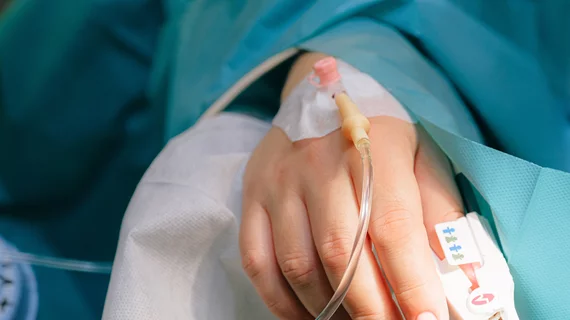Radiologist-hospitalist collaboration could boost lung cancer screening rates
Collaboration between radiologists and hospitalists could help to boost lung cancer screening rates, imaging experts charged in a new analysis.
Numerous studies have charted the poor uptake for low-dose CT, with only about 5% to 15% of eligible patients undergoing these exams. Interventions to improve adherence have often focused on patient-level (rather than systemwide) factors such as improving awareness and navigation, researchers detailed in Current Problems in Diagnostic Radiology [1].
About 12% of the U.S. population, or 35 million individuals, are hospitalized each year. Often, caregivers collect key information during these encounters such as smoking history and comorbidities. Radiologist Stuart L. Cohen, MD, and colleagues see an opportunity to engage this captive audience and boost cancer screening rates.
“Notably, since tobacco smokers, racial and ethnic minorities, and those with less access to primary care are more likely to be hospitalized, there is potential to increase rates of LCS overall and in patients suffering from healthcare disparities,” Cohen, a cardiothoracic specialist with Northwell Health in New York, and co-authors wrote Aug. 14. “This study's objective was to determine hospitalists’ perspectives on efforts to leverage hospitalizations for identification of (and outreach to) patients eligible for LCS,” they added later.
For the analysis, Cohen et al. conducted qualitative interviews with eight hospitalists from two hospitals within a large integrated health system. They used semi-structured questions to assess providers’ knowledge about LCS guidelines, ability to assess smoking history, and personal opinions on how data obtained during hospitalization could improve cancer screening rates after discharge.
From these discussions, three themes emerged:
- Hospitalists felt that a hospitalization is an opportunity to advance lung cancer screening efforts.
- Due to multiple barriers, hospitalists felt the inpatient team was not the optimal party to pinpoint LCS eligibility.
- Hospitalists strongly favored creating a dedicated team (not directly involved with inpatient concerns) to identify eligible individuals and arrange screening in an outpatient setting.
Interviewees highlighted time as a key challenge, with competing priorities during an acute hospitalization. They also expressed concern that implementing LCS during admission “might confuse patients and families about the goals of hospitalization.” Hospitalists also recalled previous instances of leaders discouraging them from addressing outpatient screening concerns during a hospital stay.
However, the interviewees did suggest certain approaches to support these inpatient-to-outpatient imaging transitions. Along with initiating dedicated inpatient LCS teams, providers could create electronic health record- or artificial intelligence-based reminders. These could prompt hospitalists to ask about smoking history, and help them facilitate handoffs to outpatient radiology teams.
“In conclusion, the hospital setting provides an important opportunity for identification of and outreach to patients for future LCS, and hospitalists would support a dedicated program to identify hospitalized patients eligible for LCS and facilitate their testing as an outpatient by a team other than the inpatient team,” the authors wrote.

